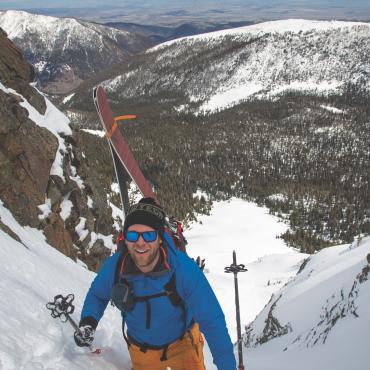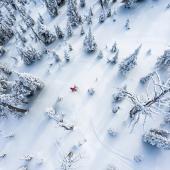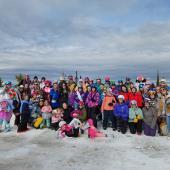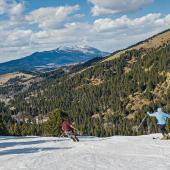Ski-Season Psyche
Getting your fall fill.
Ski season is right around the corner, and that means excitement is high. But if you want to get after it this winter, you can’t just pull your junk out of the closet and hit the hill. Here are a few tips for checking your gear, making the most of the Bozeman ski swap, and scratching your ski itch before the resorts open.
Gear Check
It’s a good idea to take your skis and boots into a local shop every fall for an inspection and tune-up. They’ll make sure your bindings are adjusted and working properly, your boots are in spec (soles can wear out and cause pre-release issues), and your skis are sharpened, waxed, and ready to rip. Do it early—all the local shops are slammed the week before Big Sky opens, which is on Thanksgiving Day.
Ski Swap Tips
The ski swap (Nov. 5-6) is an annual tradition and a treasure trove of good deals—but you have to get there early. Spring for a $25 BSF membership to enter in advance and support a good cause. Once inside, prioritize. If you need skis and boots, shop skis first; you’re going to burn more time trying on boots. Avoid brand-new gear—it’s almost always way overpriced. And don’t get wrapped up in the frenzy; there are tons of great deals to be had elsewhere, too.
Early Ski Spots
When the first flakes fall and the jonesing begins in earnest, it may be possible to link pre-season turns in a few local backcountry haunts—but be avalanche-aware and ski in control. Bridger Bowl terrain is always popular before the lifts start spinning; Fairy Lake is the closest road access to higher-elevation terrain (before the road is gated); Mt. Blackmore can often provide some decent turns at the cost of a long walk; and Beehive Basin has some great grassy slopes for early-season schussing.
Early-Season Safety
The first turns of winter are always fun, but remember: if there’s enough snow to ski, there’s enough snow to slide. The Gallatin National Forest Avalanche Center doesn’t start reporting regularly until the end of November, so be self-sufficient, carry avalanche-rescue gear, and ski conservatively—if not for avalanche danger, then because of all the rocks you’re certain to hit. If you need avalanche-education this season (and you do, if you ever ski outside the ski-area boundaries), now’s the time to get signed up. Courses typically take place in December and January, and fill fast.














